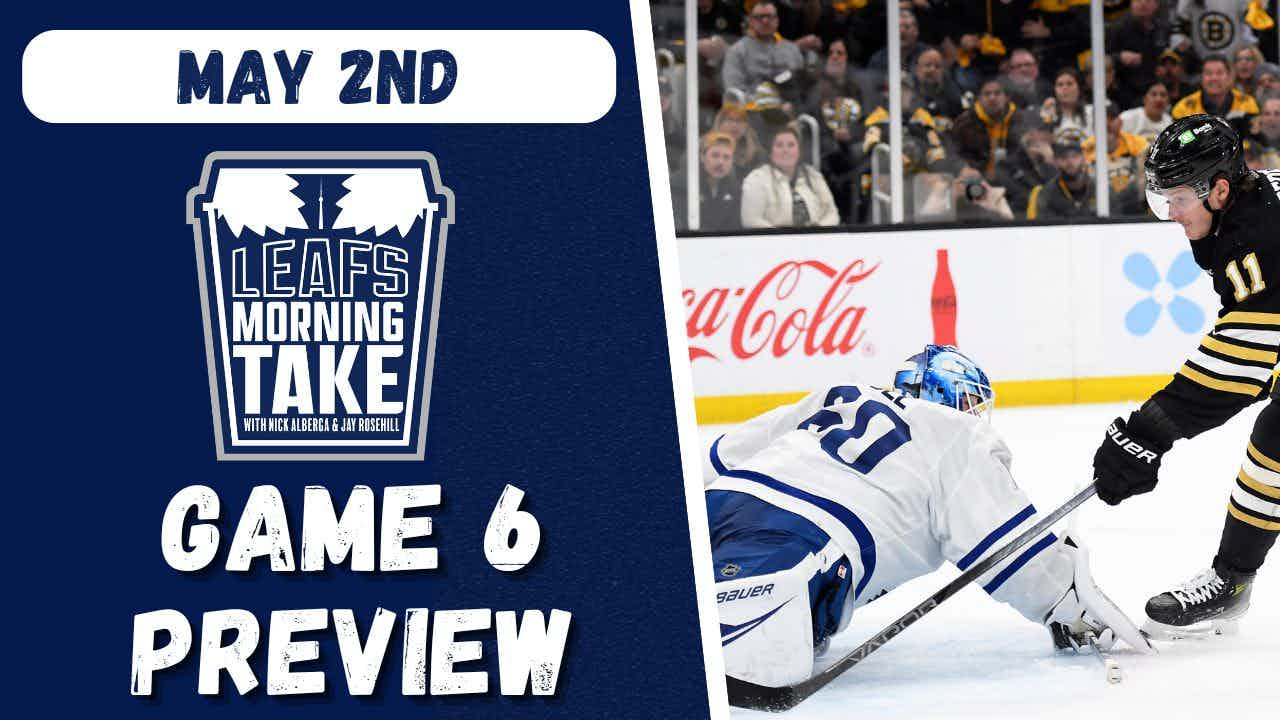Explaining the Grabovski-Bozak “Stats” Debate in Shinny Hockey Terms
By Blake Murphy
10 years ago
First thing’s first: Mikhail Grabovski is an absolute gem. Whether or not you think it’s appropriate, you have to laugh at the crazy rant Grabo went on to Jonas Siegel after he was bought out on Thursday. Can’t say I blame him, or that he was wrong on any of those points.
There has been some discussion on Twitter and via articles as to whether Grabovski was a good player, a victim of circumstance and underappreciated or a guy blown up by #fancystats who just couldn’t get the job done. It hasn’t been a back and forth so much as people restating their opinion over and over again, with analytically minded people (or people who watch the games at both ends of the ice) thinking this move is asinine and some main stream media people and Bozak fanboys supporting it. There are people in between those poles but those extremes yell the loudest.
Cam’s post sums the anti-buyout side nicely, while I think this picture sums up the other side:

But it really shouldn’t be a debate of analytics against the #watchtehgamez crowd. In fact, while some of the "advanced statistics" that have been cited are "advanced" in terms of access, calculation and name, they’re really based on very fundamental, practical and easy to understand ideas about the game of hockey. They’re ideas that anyone who has played the game or watched closely inherently knows, but once it’s quantified some people react negatively as a conditioned response to stats.
So I wanted to take the time to go through some of the stats cited around Grabo (and Bozak, Bolland and Clarkson) and explain them in more simple terms. This isn’t meant to be a primer on the stats, and the analytically-inclined can probably gloss over this. This is an explanation for the people who think that numbers ≠ watching hockey and numbers ≠ the realities of the game.
Quality of Teammates
Here’s what I want you to do: go to the next session of shinny hockey you can find. After a few minutes, identify the best and worst players on your team.
Spend half the game manipulating your line changes so you’re only playing with the best player on your team. (As you’ll see, this could be given the verb Bozaking.) At the halfway point of the session, change that strategy so you never play with him or her and instead play with some of the lesser players.
What do you think will happen? Well, if the teams are relatively even and not too subject to randomness, you’ll probably do a lot better with the good linemates than the bad ones. Unless you’re some sort of other-worldly player, the quality of your teammates will have an impact on how you perform.
This is the reason people measure Corsi QoT, or Quality of Teammates. Corsi QoT tells you what the average Corsi score (a measure of shot attempts for and against) of a player’s linemates was. Since the Leafs were a negative-Corsi team and thus everyone is likely to have “negative” teammates, we can use Corsi Rel QoT, which shows this same stat relative to the team average.
The table below shows that, while Grabovski had better teammates over a three-year stretch, Bozak had BY FAR better teammates this season. Phil Kessel probably has something to do with that.
Corsi QoT | |||
| 2010-13 | 2012-13 | 2012-13 Rel QoT | |
| Grabovski | -4.47 | -15.709 | -3.182 |
| Bozak | -6.19 | -11.687 | 2.452 |
Quality of Competition
Now imagine that same shinny game where you’ve evaluated all the players quickly at the beginning. Instead of focusing on teammates, this time identify the best player on the opposing team.
Spend the first half of the game matching up with him and trying to shadow him – your job is to shut him down. For the second half of the game, manipulate your shifts so you play against the other team’s weakest line. Against the top line, you’re focus is defensive and against the lesser line, you’re free to gamble and play offensively because they are less likely to capitalize on mistakes or be able to stop you.
Like with the teammates example, you’re very likely to see a change in your performance based on these situations. This is the reason people measure Corsi QoC, or Quality of Competition. Corsi QoC tells you what the average Corsi score of a player’s opponents was. You can also use Corsi Rel QoC, which shows this same stat relative to the average player on opposing teams.
The table below shows that, while both players played against above-average competition overall, Grabovski has had a more difficult set of opponents.
Corsi QoC | |||
| 2010-2013 | 2012-13 | 2012-13 Rel QoC | |
| Grabovski | 1.17 | 2.509 | 1.457 |
| Bozak | 0.81 | 2.299 | 0.858 |
Shooting Percentage and Save Percentage
Let’s go back to our shinny example, but forget about QoC and QoT for the time being. Now imagine you’re out there and your team’s goalie is just brutal. Muffins from the point, unscreened, are finding their way in. The rebound control is terrible, so even if you do a good job defensively, your goalie is giving the opposing team second and third chances.
At the other end, your line has had a few bad bounces – a great save here, some iron there, you feather a great pass that an open man in the slot whiffs on. Just some bad puck luck for your line.
Add those two elements together, and it’s difficult to see your line coming out looking good. You didn’t do anything wrong, though. You made the opposition’s first shot a low-percentage one and you got good chances in the offensive zone. Would it really be fair to look at your negative plus-minus to evaluate you?
This is why people measure PDO, which adds together the team’s save percentage when a player is on the ice and the team’s shooting percentage when a player is on the ice. This has been shown to regress heavily over time (to a mark of 1000), such that few players can show a sustained impact on the shooting and save percentages of their team.
The table below shows that, while Grabovski was a bit luckier previously, Bozak was the benefactor of extremely positive variance this past year. The goalie’s performance when Bozak was on the ice was much better than when Grabo was – even if Bozak is the chilliest of bros, I doubt very much James Reimer and Ben Scrivens tried to be worse when he left the ice. Bozak’s plus-minus, if you want to look at that kind of thing, was also helped by a high shooting percentage by the team when he was on the ice (thanks, Phil!).
2010-13 | 2012-13 | |||||
| Sh% | Sv% | PDO | Sh% | Sv% | PDO | |
| Grabovski | 9.34 | 910 | 100 | 8.45 | 904 | 988 |
| Bozak | 8.73 | 906 | 993 | 11.01 | 917 | 1027 |
Zone Starts
This one is a little tougher to put into shinny terms because it’s unrealistic, but assume rec league hockey instead this time around. Now, you sit on the bench until there’s a defensive zone faceoff and then you’re sent out. Because we’re playing a league game now and not shinny, you can’t really take three minute shifts, so once your minute is up, you’re off. Your job, then, is to keep the puck out of the net and get the puck out of the zone and then get off the ice.
But for the second half of the game, the team decides you’ll only start in the offensive zone. You have one goal, and that’s to put the puck in the net. If the puck comes out of the zone in a safe way, hop off for a change.
It’s pretty easy to imagine what your scoring numbers might be like in one situation versus the other. That’s why people count Offensive Zone Starts and put it into percentage terms. A player who starts in the offensive zone 60% of the time with the goal of scoring is in a pretty good situation to put up points, while someone with a 40% mark has a tougher path to points and a greater defensive responsibility.
The table below shows that Mikhail Grabovski has been deployed in the offensive zone far less often than Tyler Bozak, giving Bozak an easier path to points. That said, Bozak was still below a 50% mark due to his faceoff "prowess," which, even if it means little in aggregate terms over the course of a game, makes him a good candidate for important defensive zone daws.
| Offensive Zone Start % | ||
| 2010-2013 | 2012-13 | |
| Grabovski | 48.3 | 36.7 |
| Bozak | 49.5 | 44.8 |
Summary
So, put all of these things together now. You’re playing with some of your weaker teammates, you’re playing against the other team’s top line, you’re starting in your own zone most of the time, and your goalie is pulling a Toskala.
Do you really expect to put up good offensive numbers? Of course not.
And what about your teammate, a guy at the same position but one you’re pretty confident you’re better than. He’s playing with your best player against weaker competition and starting all his shifts in the offensive zone. The opposing goalie also lets in a pair of softies while he’s on the ice.
Is this guy better than you? Would you be okay with this conclusion? Of course not, you’d think it’d ridiculous for this guy to claim he’s played better when a good chunk of his success is based entirely on his situation and some variance.
Well that’s exactly why Leafs fans are upset about Grabovski being bought out, especially since the end game turned out to be signing Bozak at a $4.2M cap hit (Grabo was at $5.5M with one year less).
This is not a matter of stats against non-stats – every single one of these “stats” cited to support Grabovski’s play are ones that were developed to measure things we’ve all experienced on the ice or, if not, can at least understand the frustration of. This isn’t reinventing the wheel, it’s just measuring the wheel that’s been in existence for some time in different vernacular.
So yes, as the table below shows, Bozak had a slightly better Relative Corsi and more points per 60 even strength minutes. But he did so with better teammates, easier competition, better puck luck, more offensive zone starts AND the benefit of passing to Phil Kessel (he actually scored less than Grabo). Grabovski is better than Bozak, and the Leafs made a mistake in waiving the former to sign the latter.
| Grabo vs Bozak – 2012-13 Summary | |||||||
| Rel QoT | Rel QoC | PDO | Zone% | G/60 | Pts/60 | Corsi Rel | |
| Grabovski | -3.18 | 1.46 | 988 | 36.7 | 0.86 | 1.14 | 1 |
| Bozak | 2.45 | 0.86 | 1027 | 44.8 | 0.62 | 1.51 | 4 |
Recent articles from Blake Murphy





